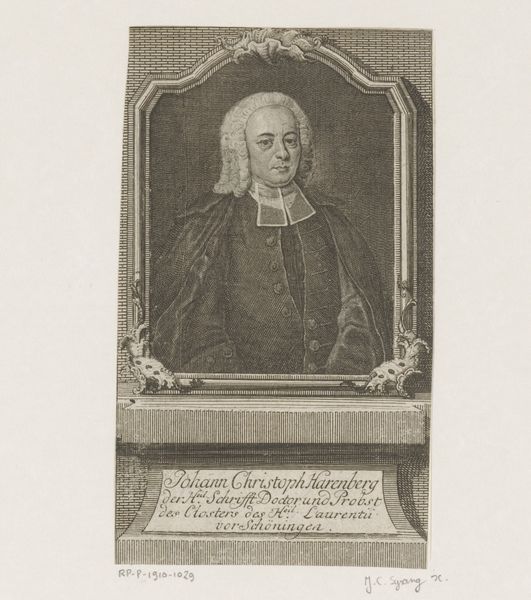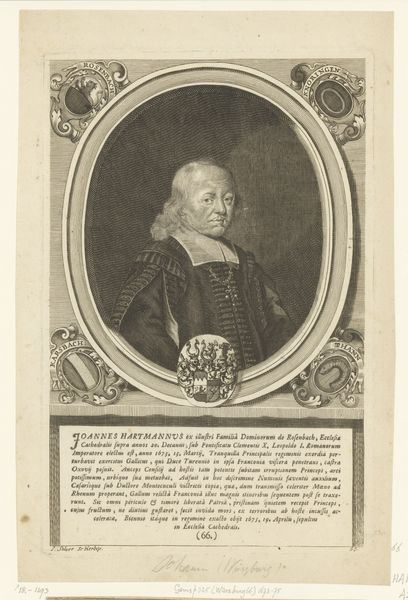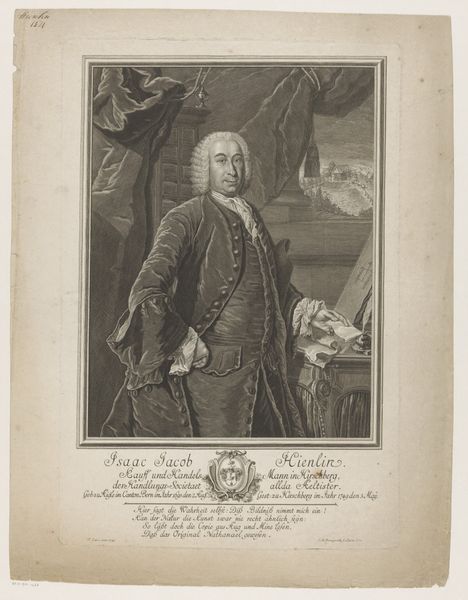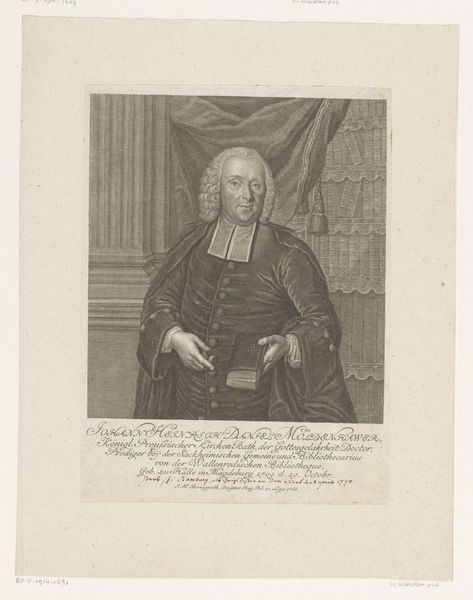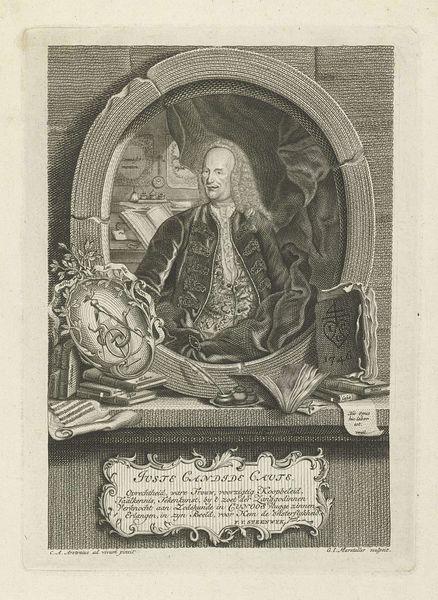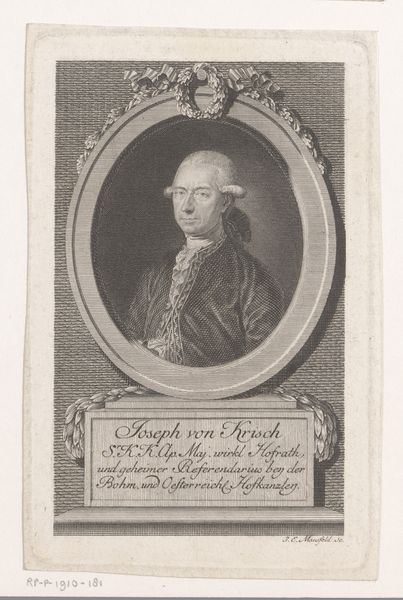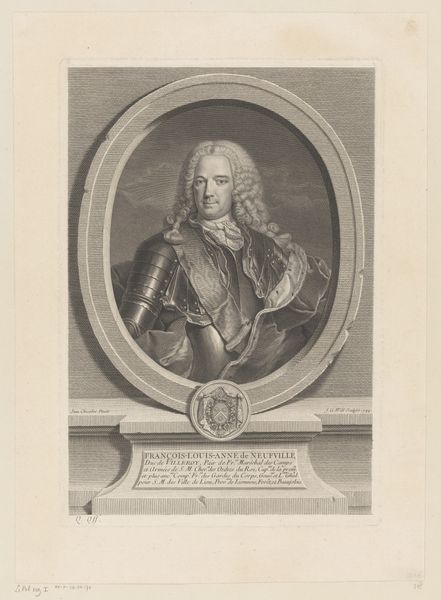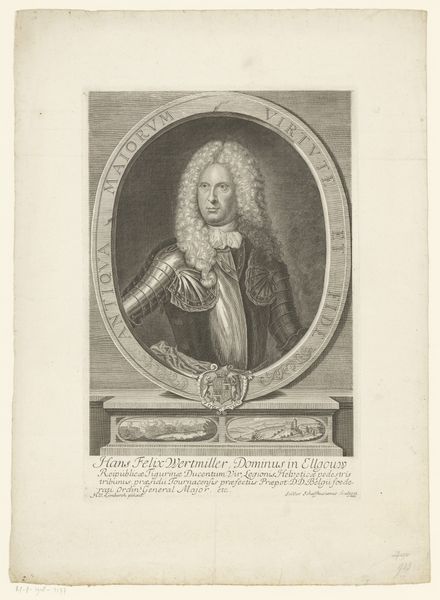
print, engraving
#
portrait
#
baroque
# print
#
old engraving style
#
history-painting
#
engraving
Dimensions: height 149 mm, width 87 mm
Copyright: Rijks Museum: Open Domain
This is a portrait of Friedrich Otto Mencke, made by Johann Martin Bernigeroth sometime in the mid-18th century. It's an engraving, meaning that the image was incised into a metal plate, likely copper, then inked and printed. Consider the labor involved. First, the engraver needed skill in draftsmanship to accurately capture Mencke’s likeness. But even more crucial was their mastery of the burin, the sharp tool used to carve lines into the metal. These lines, so fine and precise, create the tones and textures you see here, from the folds of Mencke’s coat to the intricate lace at his collar. The printing process too demanded expertise, ensuring each impression was clear and consistent. Engravings like this weren't just about artistic skill, they were about circulating images and ideas in an increasingly connected world. As a senator, Mencke likely commissioned this portrait to project an image of authority and refinement. The print medium allowed that image to be reproduced and distributed, reinforcing his social standing. So, while this may seem like a simple portrait, it’s really a product of skilled labor, social ambition, and the burgeoning print culture of the Enlightenment.
Comments
No comments
Be the first to comment and join the conversation on the ultimate creative platform.


